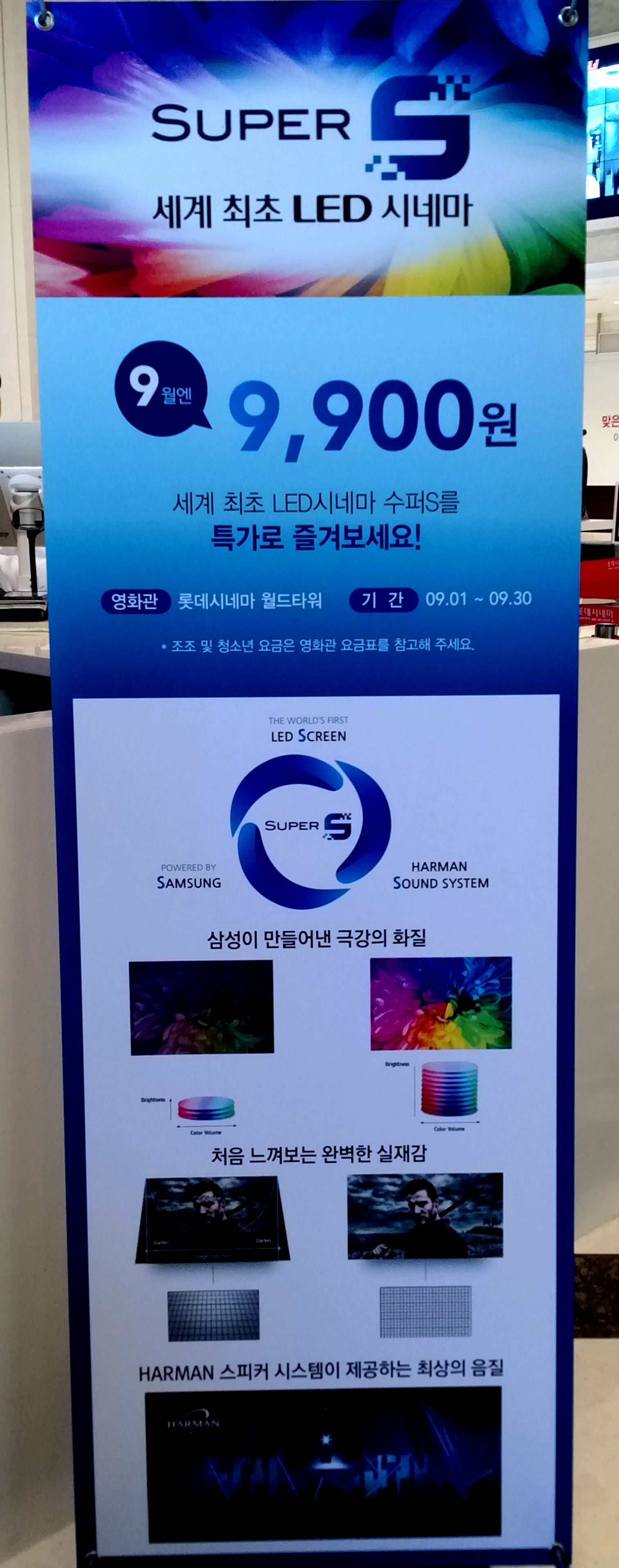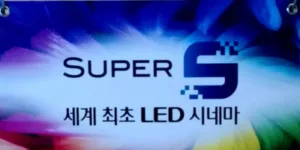I recently had the opportunity to go see a full length movie on the Samsung LED-based CinemaScreen in a commercial theater. This is the first one installed by the company in the Lotte World Tower in Seoul. I had seen a demo of the system at CinemaCon in Las Vegas last April and was very impressed. But how would it hold up watching a full length movie?

The simple answer is “Extremely well”.
While this is the first LED cinema screen in operation, a second screen just became operational in Busan, Korea and the company just announced that the Siam Paragon Cineplex in Bangkok will open one in February next year.
The movie I saw was a Spanish language thriller (The Invisible Guest) with Korean sub-titles. Since I don’t know Spanish or Korean, I had lots of time to look at the images. Surprisingly, I was actually able to follow the plot of this movie quite well, thanks to good acting, cuts and music. Just a few plot points needed clearing up after the show.
I believe this was a standard 2K DCP movie mastered at 14 fL (48 cd/m²) with a DCI-P3 color gamut. While the screen can support 4K content with HDR up to around 500 cd/m² of peak luminance, this was not an HDR movie. However, I was told that the theater operators were running the content at around 100 cd/m² of peak brightness – about twice as bright as the mastering level. This was noticeable in some of the brighter scenes but not too bright so as to shift my adaption point, I didn’t feel.
So here are my impressions.
True Blacks
The first thing you notice when the lights go out is the true black levels – just like in a Dolby Cinema theater – black is really black with no screen glow.
The next thing I noticed was the sharpness and uniformity of the image – even being scaled from the 2K source to the 4K pixels on screen. It has a very crisp and stable look and the uniformity is great with no luminance fall off in the corners as is typical with Xenon or Laser phosphor projection systems. Looking at a sky scene reveals this uniformity quite nicely.
The movie was not particularly colorful, but the skin tones looked fine with no colors that looked wrong or ‘off’, that I noticed.
I did notice two artifacts. When displaying static credits, there was a noticeable “glow” around the lettering that extended many pixels from the letters. This is very similar to what you might expect in an HDR LCD TV with too few dimmable zones – a halo effect. I asked a Samsung engineer about this and he said this was not happening in the display and he thought it was in the signal. Maybe so.
The other artifact was evident when I got close to the screen at the end of the film, while the credits were scrolling. Here, I saw a sort of strobing in the letters as they rolled up. Could this also be an artifact in the content or perhaps a beating pattern between the scroll rate and the drive multiplexing? I don’t know.
And what about the audio? Samsung has teamed with Harman to offer an approach that places the speakers above the solid LED screen and uses a phase-based approach to “de-elevate” the front speaker audio. There were a lot of scenes in the movie where two people were talking face to face. This was a great test to see if I thought the audio was coming from their mouths or someplace else. I must say, the technology worked very well as the audio (at least in my central seat) did indeed appear to come out of their lips.
What Next?
But what comes next? At the Lotte installation, the new screen technology was branded as “Super S”. Will Samsung continue to roll these screens out as Super S screens – a presentation upgrade? Will they try to become the next IMax or Dolby Cinema with a branded solution?
And more importantly, what about HDR content for these screens? Current Hollywood movies must follow a strict mastering and distribution system. Will movies now have to be mastered at 48 cd/m² for SDR, 110 cd/m² for Dolby Vision, and 250 to 500 cd/m² for a Samsung or other emissive screen solution? If we have 3-5 proprietary emissive screen solutions each with a different “look”, will manufacturers, movie studios, exhibitors and film makers be happy? I kind of doubt it.
There are so many unanswered questions here that I have come to believe that an industry wide effort is needed to develop a common specification for these future cinema emissive screens. – CC


